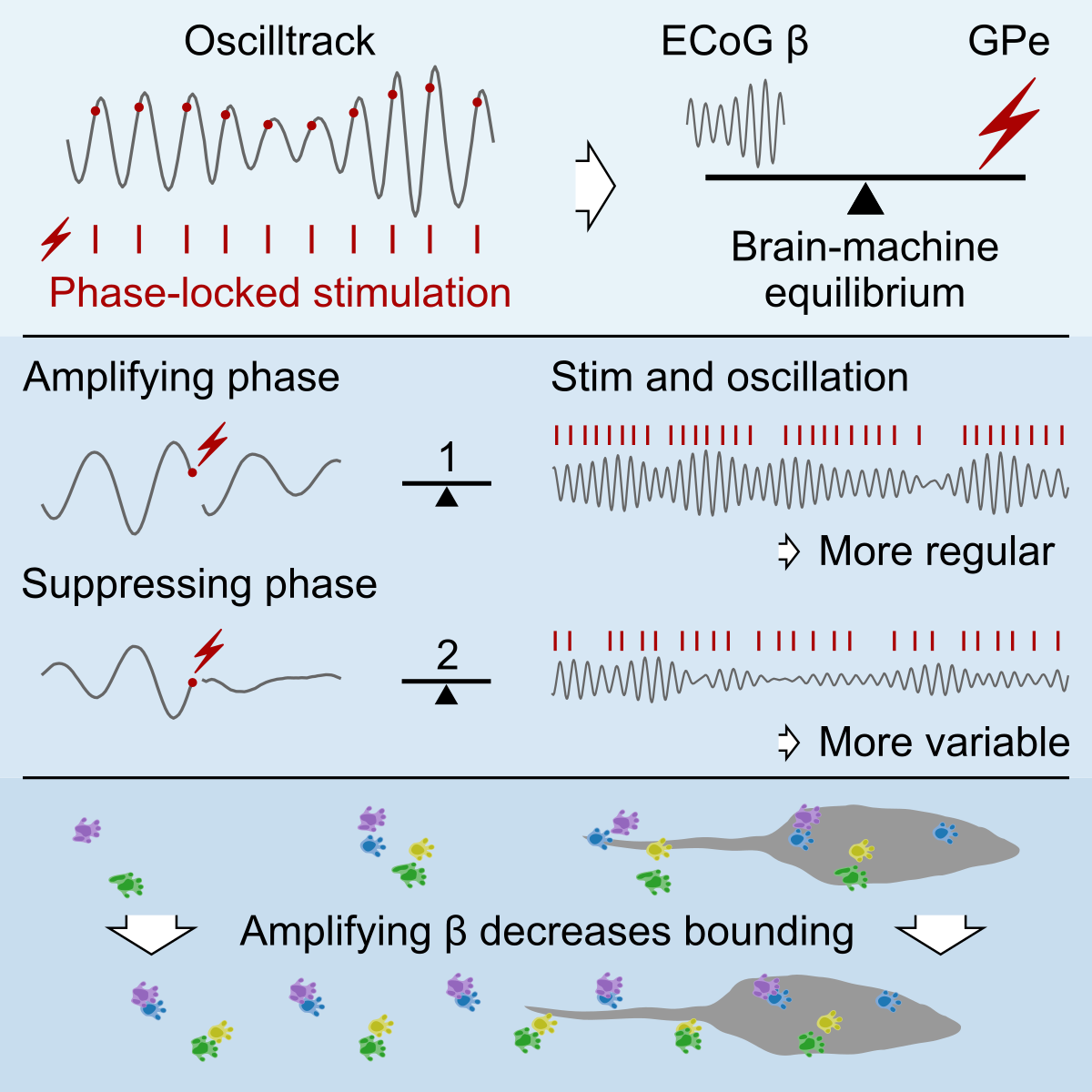Stable, interactive modulation of neuronal oscillations produced through brain-machine equilibrium.
Rhythmic electrical activity is important for brain function. Here, we detected the peak or troughs of such rhythmic activity in real-time and instantly delivered electrical stimulation to the brain. Depending on the timing of stimulation, brain activity and the stimulation pattern became more or less rhythmic simultaneously, demonstrating a stable brain-machine interaction.
Closed-loop interaction has the potential to regulate ongoing brain activity by continuously binding an external stimulation to specific dynamics of a neural circuit. Achieving interactive modulation requires a stable brain-machine feedback loop. Here, we demonstrate that it is possible to maintain oscillatory brain activity in a desired state by delivering stimulation accurately aligned with the timing of each cycle. We develop a fast algorithm that responds on a cycle-by-cycle basis to stimulate basal ganglia nuclei at predetermined phases of successive cortical beta cycles in parkinsonian rats. Using this approach, an equilibrium emerges between the modified brain signal and feedback-dependent stimulation pattern, leading to sustained amplification or suppression of the oscillation depending on the phase targeted. Beta amplification slows movement speed by biasing the animal's mode of locomotion. Together, these findings show that highly responsive, phase-dependent stimulation can achieve a stable brain-machine interaction that leads to robust modulation of ongoing behavior.

2022. Cell Rep, 41(6):111616.
2023. Front Hum Neurosci, 17:1280281.
